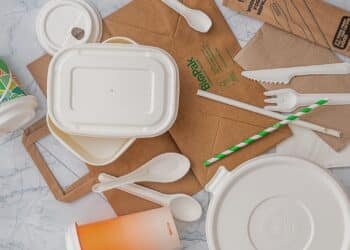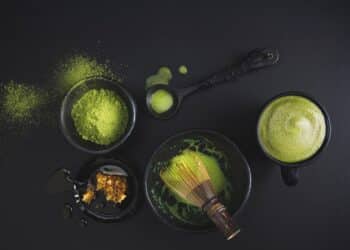Over my years being a barista, I was always taught the same thing: this is the equipment, and this is how you dose, tamp, extract, froth, texture, and pour. Now go for gold.

I remember changing shops quite a few years ago. I was still quite green at the time. I managed to ace my interview and make a pretty decent cup of coffee. I started work the following week. On my first day I worked alongside the head barista who was mainly there to see what kind of habits I had, and help adjust anything that wasn’t quite in line with shop procedure.
During the shift I remember continually saying to him: “If I’m not doing something right, please tell me. I want to make sure I am making the best possible coffees for our customers.” At the end of the shift I distinctly remember being a little disheartened. Why? Because none of my habits needed changing. I got no feedback. I was only told: “You did a great job. Keep that up and you’ll have my job one day.”
I should have felt elated that I had just smashed my first day out of the park, and that nothing went wrong. But I didn’t. I wanted to know more about what I was doing: why my milk was slightly bubblier than the head barista’s, why his latte art was better than mine, how to get my coffees looking and tasting more like his.
Generally speaking, once you know how to make a quality and consistent cup of coffee and calibrate a grinder, you’re classed as a barista. But how do you gain more knowledge around coffee? Do you wait for your manager or boss to train you in these other aspects? Do you seek out the training from them? Or, do you go externally and learn outside of your employment?
Here is my main philosophy behind training and coffee:
- Have fun. If you can make training fun, then a lot more information will be retained.
- Repeat and relay. Ask questions about what you have been talking about and get the trainee to respond frequently. People retain more information the more they hear it.
- Make it relatable. For example, I was training a gentleman one day and he admitted straight out of the gates that he didn’t drink coffee and had no idea about it. He was an area manager for a site and needed to learn how to calibrate a grinder in order to teach other people to do it. My first question to him was: “What are you passionate about outside of work?” He replied “music, I play lead guitar for a band”. Perfect. I used the two themes to correlate training examples and help him retain the information. For instance, I told him to think of the grind adjustment like tuning the strings of the guitar – the tighter you turn the peg, the higher the note. The tighter/finer you turn the blades the higher the extraction time will be. By the end of our session we had him calibrating a grinder like a pro.
At Mocopan, we always start training at the very beginning. Even if we are working with an experienced barista, you can never assume they already know the finer details of coffee and how it works. I am a huge believer in learning to crawl before you can walk, let alone run.
My key approach with successful training includes the following.
Teach the basics
Initially, you just want the barista to build their muscle memory and use technique at the machine. You don’t want to overload them with information and scare them when it comes to coffee. Spend time with your barista fine-tuning the basic skills required to make a quality coffee in a relatively timely manner. Use Table 1 (below) as a guide to get started.
Educate
The next step in your training plan is to push a barista’s skills and knowledge to the next level on steps and techniques, and why we do things a certain way. Table 2 (below) is a good breakdown on three key areas of coffee production, and what to teach baristas once they have mastered the basics.
Cause and effect
Anyone can make a coffee, but knowing how to troubleshoot issues and complaints about the product is what sets baristas above the rest. When something goes wrong, baristas need to think outside the traditional box of grinder calibration and recipe, and look at the bigger picture.
I had a prime example of this while I was in a store training one day. A customer made a complaint about their coffee tasting “watery” and like “skim milk” even though they had ordered a full cream coffee. The barista apologised and offered to remake it, to which the customer stated it tasted the same. The grinder was calibrated, the milk was definitely full cream, it wasn’t reheated, and was definitely in the temperature range. So what was going on?
While watching the barista make the second coffee, I noticed their milk texture was beautiful, however the steam arm was too deep into the milk and not creating a vigorous enough vortex to create that beautiful creamy texture. While making the third coffee for the customer I coached the barista to heighten their steam arm by approximately 0.5 centimetres and draw it closer to the surface. We changed nothing else and handed the coffee to the customer, to which he said it was much better and had the “creamy, full cream” taste he was after.
I got the barista to taste the original milk versus the second and third batch, and asked her opinion. She agreed with the customer about the wateriness of the milk, and was amazed at how such a small adjustment in technique could change the product so dramatically.
Step it up
Now comes the fun side in regards to making coffee – teaching baristas latte art, equipment care, and how to work as a team with other baristas. These advanced skills are for baristas who confidently and consistently demonstrate their training and education skills. Too frequently I see people advance their skills too quickly, and they lose out on understanding the product and its reactions. Jumping straight to latte art will mean you can create a pretty coffee but it doesn’t mean it will taste any good. Use Table 3 (below) as a guide.

At the end of the day it doesn’t matter if you are a new, middle-ground, or advanced barista, or even a barista trainer, we all strive to make and understand coffee to the best of our ability.






